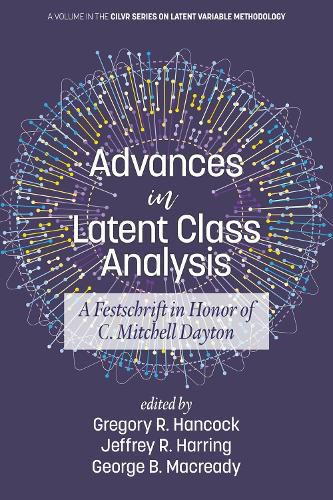Readings Newsletter
Become a Readings Member to make your shopping experience even easier.
Sign in or sign up for free!






This title is printed to order. This book may have been self-published. If so, we cannot guarantee the quality of the content. In the main most books will have gone through the editing process however some may not. We therefore suggest that you be aware of this before ordering this book. If in doubt check either the author or publisher’s details as we are unable to accept any returns unless they are faulty. Please contact us if you have any questions.
What is latent class analysis? If you asked that question thirty or forty years ago you would have gotten a different answer than you would today. Closer to its time of inception, latent class analysis was viewed primarily as a categorical data analysis technique, often framed as a factor analysis model where both the measured variable indicators and underlying latent variables are categorical. Today, however, it rests within much broader mixture and diagnostic modeling framework, integrating measured and latent variables that may be categorical and/or continuous, and where latent classes serve to define the subpopulations for whom many aspects of the focal measured and latent variable model may differ.
For latent class analysis to take these developmental leaps required contributions that were methodological, certainly, as well as didactic. Among the leaders on both fronts was C. Mitchell Chan Dayton, at the University of Maryland, whose work in latent class analysis spanning several decades helped the method to expand and reach its current potential. The current volume in the Center for Integrated Latent Variable Research (CILVR) series reflects the diversity that is latent class analysis today, celebrating work related to, made possible by, and inspired by Chan’s noted contributions, and signaling the even more exciting future yet to come.
$9.00 standard shipping within Australia
FREE standard shipping within Australia for orders over $100.00
Express & International shipping calculated at checkout
This title is printed to order. This book may have been self-published. If so, we cannot guarantee the quality of the content. In the main most books will have gone through the editing process however some may not. We therefore suggest that you be aware of this before ordering this book. If in doubt check either the author or publisher’s details as we are unable to accept any returns unless they are faulty. Please contact us if you have any questions.
What is latent class analysis? If you asked that question thirty or forty years ago you would have gotten a different answer than you would today. Closer to its time of inception, latent class analysis was viewed primarily as a categorical data analysis technique, often framed as a factor analysis model where both the measured variable indicators and underlying latent variables are categorical. Today, however, it rests within much broader mixture and diagnostic modeling framework, integrating measured and latent variables that may be categorical and/or continuous, and where latent classes serve to define the subpopulations for whom many aspects of the focal measured and latent variable model may differ.
For latent class analysis to take these developmental leaps required contributions that were methodological, certainly, as well as didactic. Among the leaders on both fronts was C. Mitchell Chan Dayton, at the University of Maryland, whose work in latent class analysis spanning several decades helped the method to expand and reach its current potential. The current volume in the Center for Integrated Latent Variable Research (CILVR) series reflects the diversity that is latent class analysis today, celebrating work related to, made possible by, and inspired by Chan’s noted contributions, and signaling the even more exciting future yet to come.